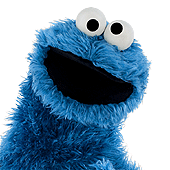frogboy4
Inactive Member
- Joined
- Apr 13, 2002
- Messages
- 10,080
- Reaction score
- 358
In this fast paced world of disposable film making it is no wonder that CG is so popular. An image or character can easily be swapped for another with computer graphics technology, but that's not necessarily a good thing.
When looking back at the visuals in high-concept pieces such as the original Indiana Jones films, Blade Runner and The Dark Crystal there's a rich sense of pre-production planning that's lacking in much modern cinema. There should be no need to swap elements around so much and, as we know with Lucas' tinkering with the original Star Wars trilogy, CG can actually rob a film of its heart and alter crucial subject matter to the detriment of the piece.
Computers are a tool - not a genre, band-aid or an excuse for lazy planning. The best films are like an orchestra - many elements blending together to make for a better piece. There's too much post-production tweaking that computers allow these days and it really can dim the thrill of cinema.
A puppet or animatronics creation inhabits real space and its physical presence will always seem more natural to the human eye, but computer graphics have their place too.
I suppose the answer to the debate is simply the question - why? What is the reasoning behind a director's choice to go a certain rout? Does the artist have a decisive vision? What best creates that vision and illusion - what enhances the piece?
The answer is usually both in the right place.
When looking back at the visuals in high-concept pieces such as the original Indiana Jones films, Blade Runner and The Dark Crystal there's a rich sense of pre-production planning that's lacking in much modern cinema. There should be no need to swap elements around so much and, as we know with Lucas' tinkering with the original Star Wars trilogy, CG can actually rob a film of its heart and alter crucial subject matter to the detriment of the piece.
Computers are a tool - not a genre, band-aid or an excuse for lazy planning. The best films are like an orchestra - many elements blending together to make for a better piece. There's too much post-production tweaking that computers allow these days and it really can dim the thrill of cinema.
A puppet or animatronics creation inhabits real space and its physical presence will always seem more natural to the human eye, but computer graphics have their place too.
I suppose the answer to the debate is simply the question - why? What is the reasoning behind a director's choice to go a certain rout? Does the artist have a decisive vision? What best creates that vision and illusion - what enhances the piece?
The answer is usually both in the right place.

 Welcome to the Muppet Central Forum!
Welcome to the Muppet Central Forum!.jpg) Christmas Music
Christmas Music Macy's Thanksgiving Parade
Macy's Thanksgiving Parade Sesame Street debuts on Netflix
Sesame Street debuts on Netflix Back to the Rock Season 2
Back to the Rock Season 2 Sam and Friends Book
Sam and Friends Book Jim Henson Idea Man
Jim Henson Idea Man Bear arrives on Disney+
Bear arrives on Disney+